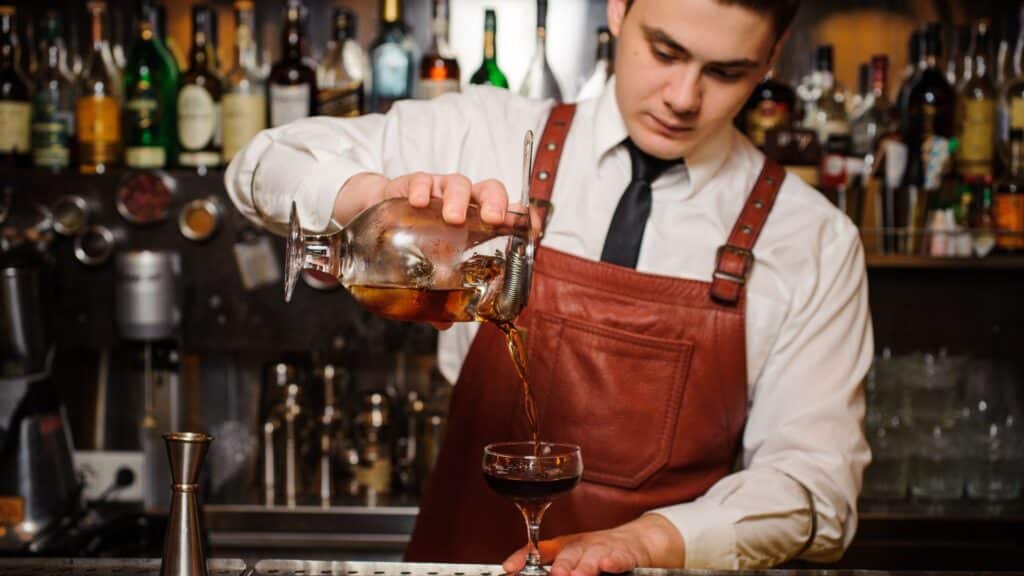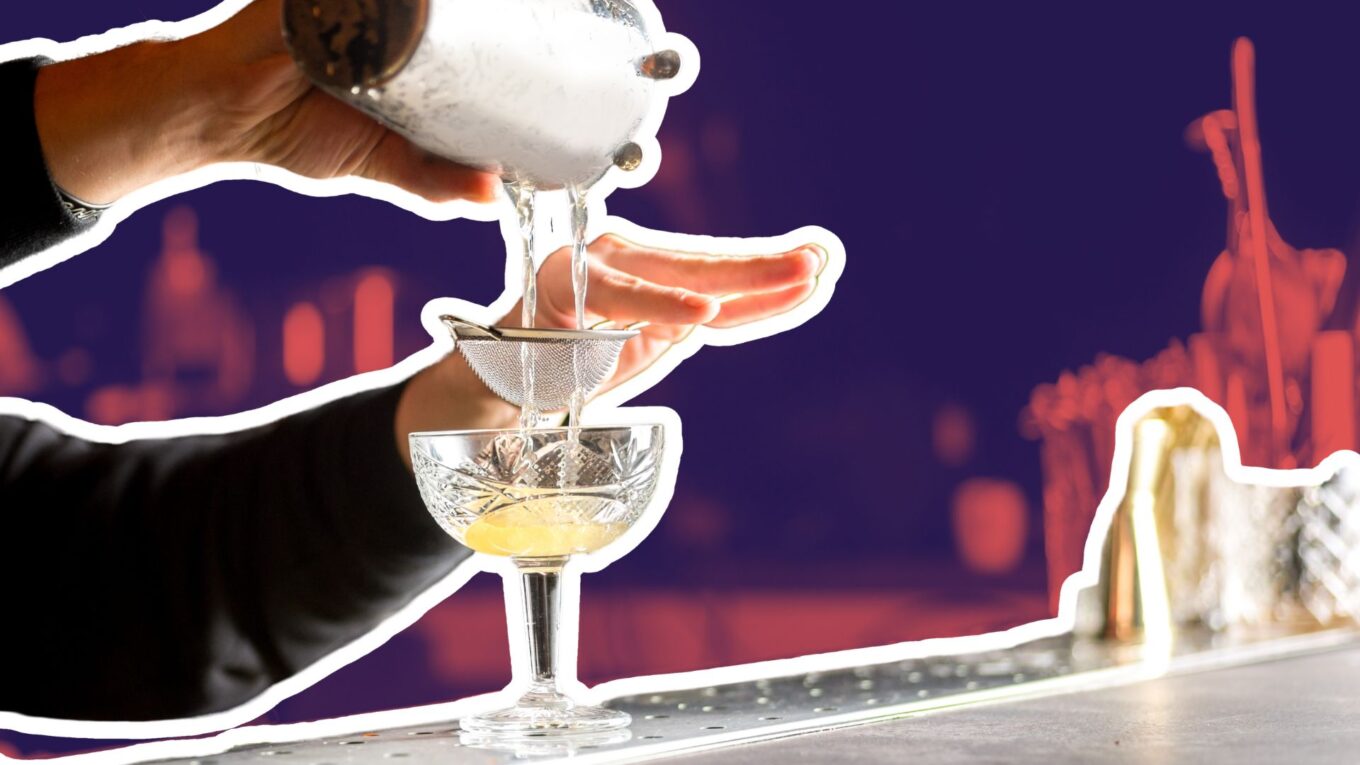Crafting the perfect single-mixer cocktail can be tricky, especially when getting the pour right.
Many home bartenders struggle with consistency, often under or over-pouring their spirits.
But don’t worry – mastering the standard pour is easier than you think.
This guide will walk you through the essentials of pouring techniques, helping you create perfectly balanced drinks every time.
We’ll cover the ideal measurements for different types of cocktails, explore handy tools like jiggers and speed pourers, and share pro tips for achieving that elusive perfect pour.
Whether you’re a budding mixologist or just looking to up your home bar game, you’ll soon be pouring with confidence.
What is a Standard Pour?

A standard pour is a fundamental skill every bartender must master.
It refers to precisely measuring 1.5 ounces of liquor, forming most cocktails’ backbone.
This measurement ensures cocktails have balanced flavors, prevent over-pouring, and maintain consistency in taste.
By adhering to a standard pour, bars can control liquor costs effectively while ensuring customer satisfaction.
This consistency often leads to repeat customers who know they can expect the same great-tasting drink every time.
While 1.5 ounces is the norm, some variations exist.
For instance, a martini might use 2 ounces of gin, while a Long Island Iced Tea could contain multiple 0.5-ounce pours of different spirits.
Understanding these variations helps in crafting a wide range of cocktails accurately.
Essential Tools for Accurate Pouring
The right tools are crucial for achieving a perfect pour. Jiggers and pour spouts are two indispensable items in a bartender’s arsenal.
1. Jiggers
Jiggers are essential for precise measurements.
They come in two main types: standard jiggers with a single measurement and double-sided jiggers offering two different measurements.
Using jiggers ensures accurate pours and helps maintain consistency across drinks.
2. Pours
Pour spouts facilitate controlled pouring.
They attach to bottles and allow for a steady flow of liquid.
Standard pour spouts are common, but digital versions are gaining popularity because they offer enhanced accuracy through real-time pour tracking.
Techniques for Mastering the Pour

Mastering the pour technique is key to bartending proficiency. There are two main methods: using a jigger and free pouring.
Using a jigger provides precision and consistency. To use it effectively, fill the jigger to the brim and pour it into the glass without spilling.
This method is ideal for beginners and ensures accurate measurements every time.
Free pouring is a skill for more experienced bartenders. The four-count method is commonly used, where counting to four equals a 1.5-ounce pour.
To perfect this technique, practice with water regularly to develop muscle memory.
While jigger pouring offers more precision, free pouring can be faster during busy periods.
However, it requires significant practice to maintain accuracy. Ultimately, the best method depends on the bartender’s skill level and the bar’s preferences.
Consistency Tips
Consistency is crucial for quality and customer satisfaction. Two key aspects to focus on are bottle hold and maintaining a steady stream.
For proper bottle hold, grip the bottle by the neck and invert it between 45 to 90 degrees. This technique allows for better control and a smoother pour.
Maintaining a steady stream ensures smooth pouring without interruptions.
Avoid shaking or jerking movements that can disrupt the flow.
Regular practice is essential to develop a smooth, consistent pour.
During busy service times, it’s easy to rush and compromise consistency.
Stay focused and take a moment to reset between pours if needed.
Common mistakes include tilting the bottle too quickly or not maintaining a consistent angle throughout the pour.
Being aware of these pitfalls can help you avoid them.
Benefits of a Standard Pour
Understanding the benefits of a standard pour reinforces its importance in bartending. It ensures quality control, cost efficiency, and customer satisfaction.
Quality control is maintained as consistent liquor measurements lead to well-balanced cocktails.
This consistency in flavor profiles keeps customers happy and returning, knowing they’ll get the same great taste every time they order a drink.
Cost efficiency is another significant benefit. By preventing the overuse of liquor, bars can maximize profitability.
It also makes inventory management easier, as you can accurately track and predict liquor usage.
Many successful bars have implemented strict standard pour policies and seen improved customer satisfaction and profitability.
To achieve these benefits, it is crucial to train staff on the importance of standard pours and provide regular refresher courses to maintain high standards.
Conclusion
As we wrap up our journey into the world of standard pours for single-mixer cocktails, remember that precision and consistency are key.
By mastering the 1.5-ounce pour, you’ll create perfectly balanced drinks every time.
Whether you use jiggers or perfect your free-pouring technique, practice is essential.
The right tools and methods ensure quality and help manage costs effectively.
So, what’s next? Start applying these tips in your home bar or professional setting.
Experiment with different cocktails, always keeping that standard pour in mind.
Share your experiences in the comments below. We’d love to hear how these techniques have improved your drink-making skills.
And don’t forget, a well-executed standard pour isn’t just about measurements; it’s about crafting experiences that keep people coming back for more.




